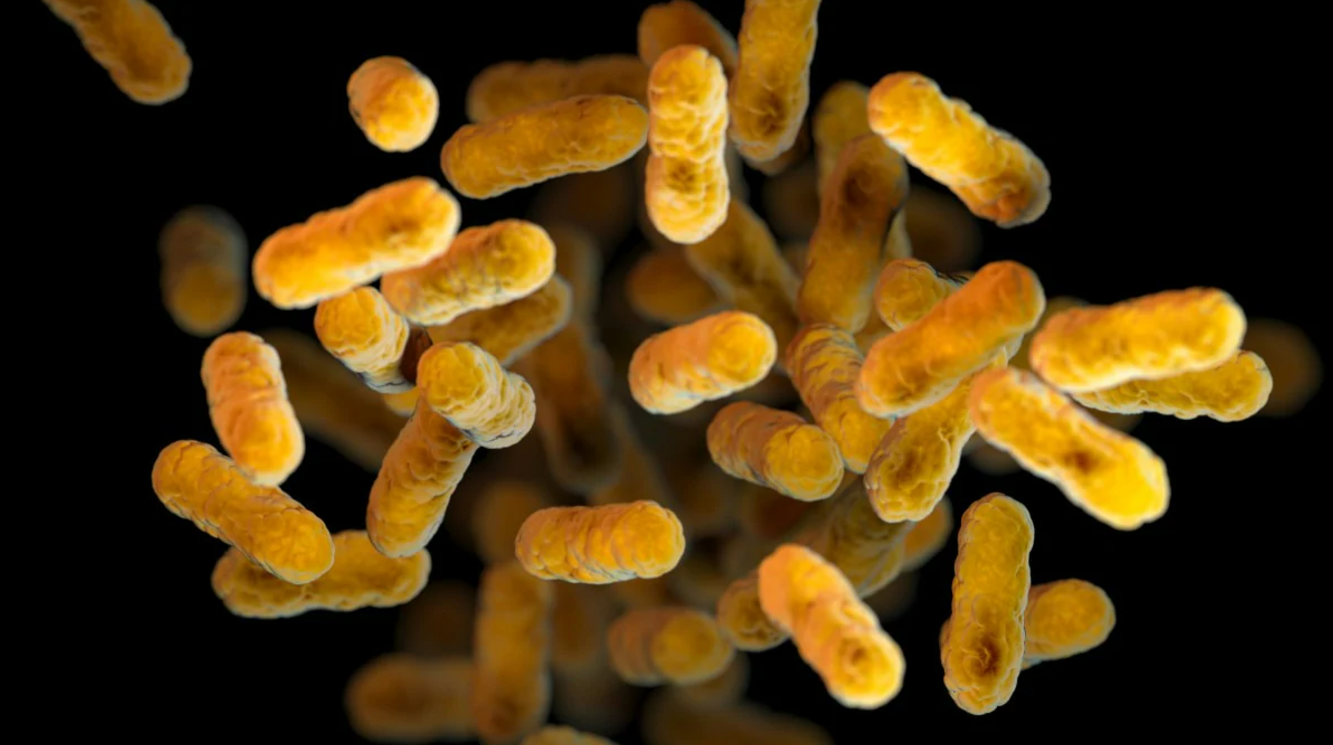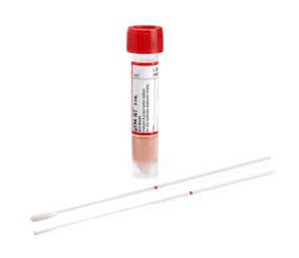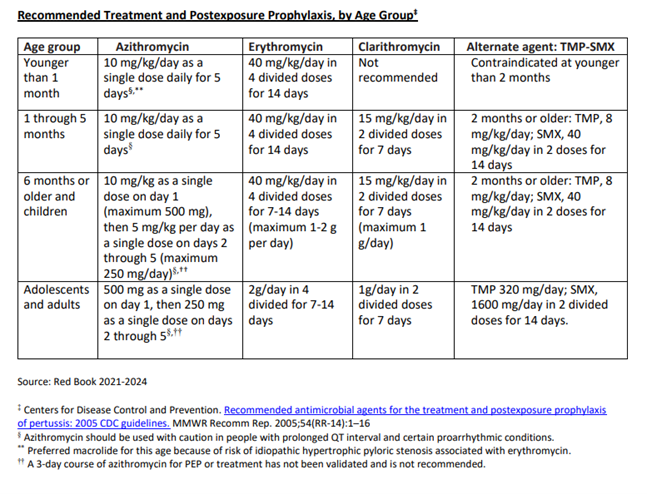
Key Facts
This webpage is only intended for use by staff from the Los Angeles County Department of Public Health.Page Updated 1-17-25
- Agent: Bordetella pertussis, a Gram-negative pleomorphic bacillus.
- Identification:
- Symptoms: Acute bacterial disease of the tracheobronchial tree. Insidious onset of mild upper respiratory tract symptoms (catarrhal stage) for 1-2 weeks followed by a cough which becomes paroxysmal within 1 to 2 weeks, usually lasting 1 to 6 weeks (paroxysmal stage). Paroxysms are characterized by repeated violent cough episodes without inhalation followed by characteristic high-pitched inspiratory whoop, frequently ending with expulsion of clear, tenacious mucus. Fever is usually absent or minimal if present. Post-tussive vomiting is common. Cases may not show typical paroxysms or whoop. Infants often have a shorter catarrhal stage and may present with facial color changes, apnea, leukocytosis, and absence of whoop.
- Differential Diagnosis: A whooping cough syndrome may also be caused by Bordetella parapertussis, Bordetella holmesii, Mycoplasma pneumonia, Chlamydia trachomatis, Chlamydia pneumoniae, Bordetella bronchiseptica (although rarely), and certain adenoviruses.
- Diagnosis: Clinical syndrome and isolation of B. pertussis from a culture or a positive polymerase chain reaction (PCR) test for B. pertussis confirms the diagnosis. PCR has optimal sensitivity during the first 3 weeks of cough when bacterial DNA is still present in the nasopharynx. PCR is unlikely to be useful 5 or more days after start of antimicrobial therapy. Serological tests are not recommended.
- Incubation Usually 7-10 days but can range from 4 to 21 days.
- Reservoir: Human.
- Source: Respiratory tract secretions of infected persons.
- Transmission: Principally respiratory by droplet spread; indirect spread through articles soiled with discharges is possible.
- Communicability: Persons >1 year of age are considered infectious from the onset of cold-like symptoms until after 5 days of treatment or until 21 days after cough onset if no (or partial) treatment is given. Infants < 1 year are considered infectious for 6 weeks if no or partial treatment is given.
- Specific Treatment: Initiate antibiotic treatment within 21 days of cough onset to modify clinical manifestations. Initiating treatment more than 21 days after cough onset has limited benefit to the patient. See section under “Contact and Outbreak Management” for medications and recommended dose and duration for each of these agents. Dosage and duration of treatment is the same for treatment and post- exposure prophylaxis.
- Immunity: Immunity due to natural infection has been shown to wane in adolescence and adulthood. Immunity conferred by the pertussis component of the DTP/DTaP vaccine decreases over time with little or no protection 5 to 10 years following the last dose. Even with full immunizations some exposed infants and children may still develop disease, although much milder.
Case Investigation
Contact and Outbreak Management
Appendix & Resources
Figure 1
| Test | Specimen Collection Tube |
|---|---|
| Pertussis, Qualitative Real-time PCR Specimen: Nasopharyngeal (NP) swab |
Universal Viral Transport Media |
Resources
- PERTUSSIS CASE REPORT (CDPH 8258)
- PERTUSSIS DEATH WORKSHEET
- Pertussis Death Worksheet Instructions
- Public Health Nursing Protocol:
- Home visit is required as necessary. Refer to “Public Health Nursing Home Visit REQUIRED Algorithm” (B-73 Part IV Public Health Nursing Home Visit Protocol)
- Exposure Notification Letters
- VPDCP Patient Referrals to Public Health Centers for NP Pertussis PCR Testing protocol


